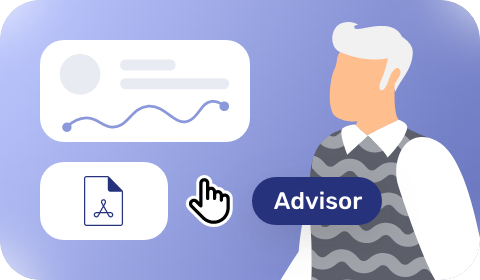The financial landscape is changing fast and fintech firms and tech giants are spearheading the revolution. Alongside COVID-19, which forced consumers to experiment with online banking in place of in-branch meetings, these providers are shifting consumer expectations in favour of digital banking experiences.
46% of consumers said they would be prepared to speak to an advisor via video call once branches reopened and 35% said they would prefer this to a face-to-face meeting.
It’s increasingly urgent for financial institutions to reassess their digital banking capabilities if they’re going to meet evolving customer preferences. To keep up with the competition, organizations must embrace the potential of digital transformation.
Digital banking offers new opportunities for financial service providers and a radically different way of doing business from a new emphasis on sustainability to educational content and AI-enabled recommendations, as well as automated touchpoints, personalized interactions, and low-effort experiences.
Sustainability attracts eco-conscious customers: Nutmeg
Sustainability has become a top priority for investors, particularly millennials. According to Morgan Stanley, under-35s are twice as likely to sell a holding if they consider a company’s behavior to be environmentally or socially unsustainable.
But sustainability is not just about socially conscious, environmentally friendly, and ethical business practices. Consumers want providers to help them be more sustainable too.
Financial innovators are embracing this trend. Nutmeg, an online investment management platform, now provides investors with environmental, social, and governance social scores for its ready-made portfolios.
Educational content builds trust: Quirk
Building relationships with customers starts early on, engaging prospects with personalized guidance tailored to their life circumstances, whether they’re heading to university or preparing for retirement.
82% of retail clients say that they would trust their financial institution more if it provided them with annual continuing education and helped them to understand financial products.
Customers have more faith in providers that offer personalized educational content—something understood by fintech firm Quirk. The budgeting app uses a personality test to get to know its users before delivering personalized advice on topics from investing to credit scores and spending habits.
Digital advice brings the bank-customer relationship closer: Renta 4 Banco
Customers want advice adapted to their unique situation—and ideally via digital channels. According to Accenture, there has been a 45% increase in customer interest in personalized advice from their chosen financial institutions since 2018, and 66% want digital experiences to replace in-person financial services activities.
Spanish financial services company, Renta 4 Banco, took advantage of this trend during the pandemic, launching a video call and chat service that allows its 250 specialist investment advisors to build stronger and more lasting relationships with savers and investors.
AI-powered recommendations speed up financial decisions: Monzo
AI, machine learning, and predictive analytics can all be used to create more targeted recommendations. These technologies continuously learn and update their predictions based on individual behavior and recent life events, providing ever more personalized and relevant advice.
UK-based digital bank Monzo capitalizes on such tools to provide customers with real-time data reports and notifications, helping them to make smarter financial decisions faster with greater understanding and analysis of their spending.
Low-effort experiences simplify banking: Intesa Sanpaolo
Interactions should involve minimum effort and hassle. For example, customers should be able to transfer from live chat to channels like voice or video call easily and seamlessly.
These digital customer engagement features are already delivering strong results for banks such as Intesa Sanpaolo in Italy. The banking group uses digital chat functions in its e-banking and mobile app to sort issues separately from its call center, reducing call center workload and allowing customers to solve issues quickly online.
For more complex problems, customers can escalate their issues to an advisor. Co-browsing within the e-banking and mobile app are also available if a visual context is required for resolution.
Automated touchpoints boost customer satisfaction: Bank of America
Finally, automation can be used to make banking transactions simple and financial products stress-free to use. Chatbots, for example, are increasingly popular. 67% of millennials say they prefer robo-advisory, compared to just 30% of Gen X and Baby Boomers.
Bank of America is one example of a financial institution that’s fulfilling this new customer demand with its chatbot function named Erica.
Erica supports customers with everyday financial issues in real-time, reducing operational costs and boosting customer satisfaction. Over 10 million customers have already interacted with the service.
The State of Digital Banking
Learn more about how your financial organization could better meet the needs of tomorrow’s customers and keep up with the fast pace of change. Download the latest Forrester report here.




 Interaction Management Hub
Interaction Management Hub Secure Messenger
Secure Messenger Video & Voice
Video & Voice



